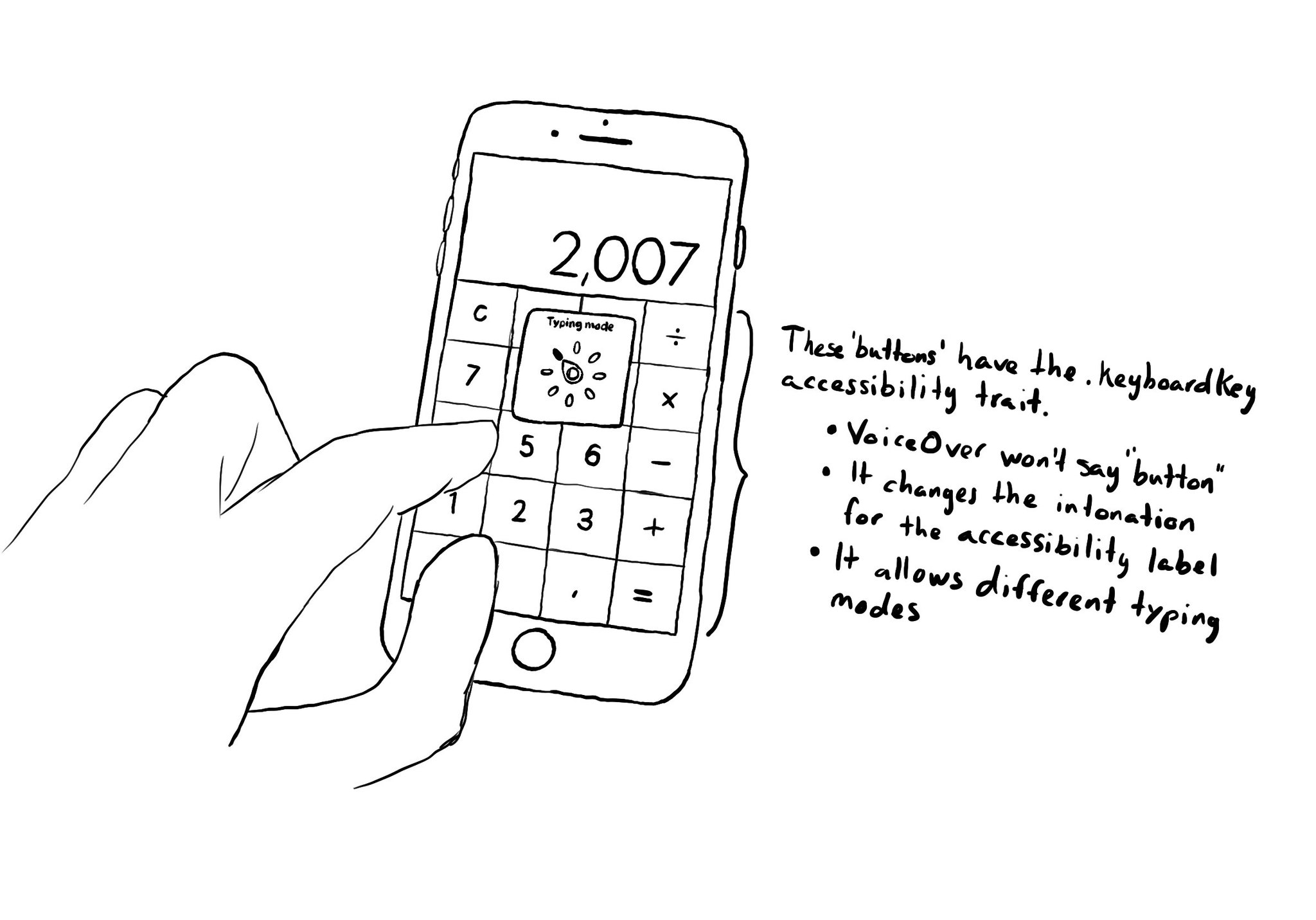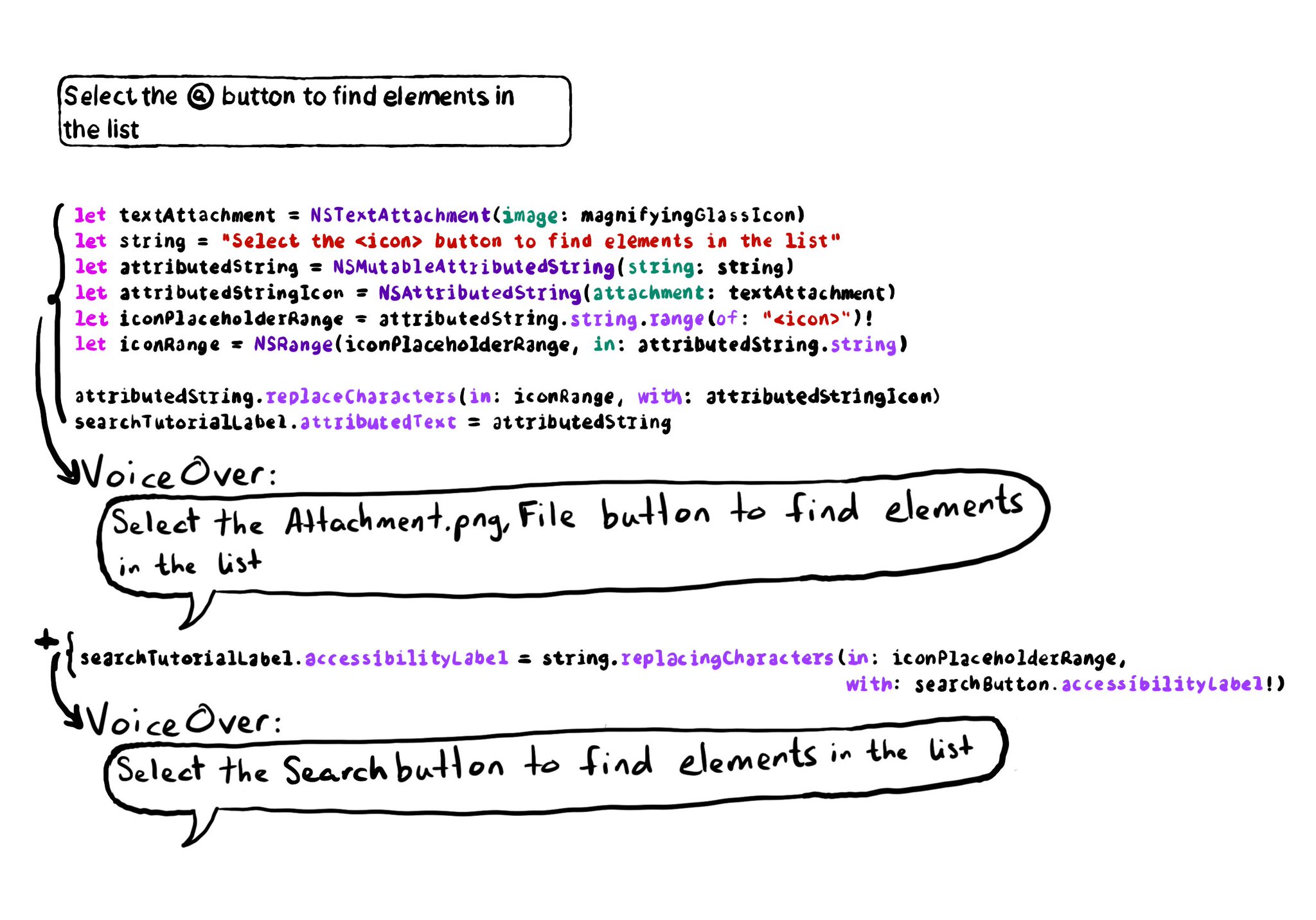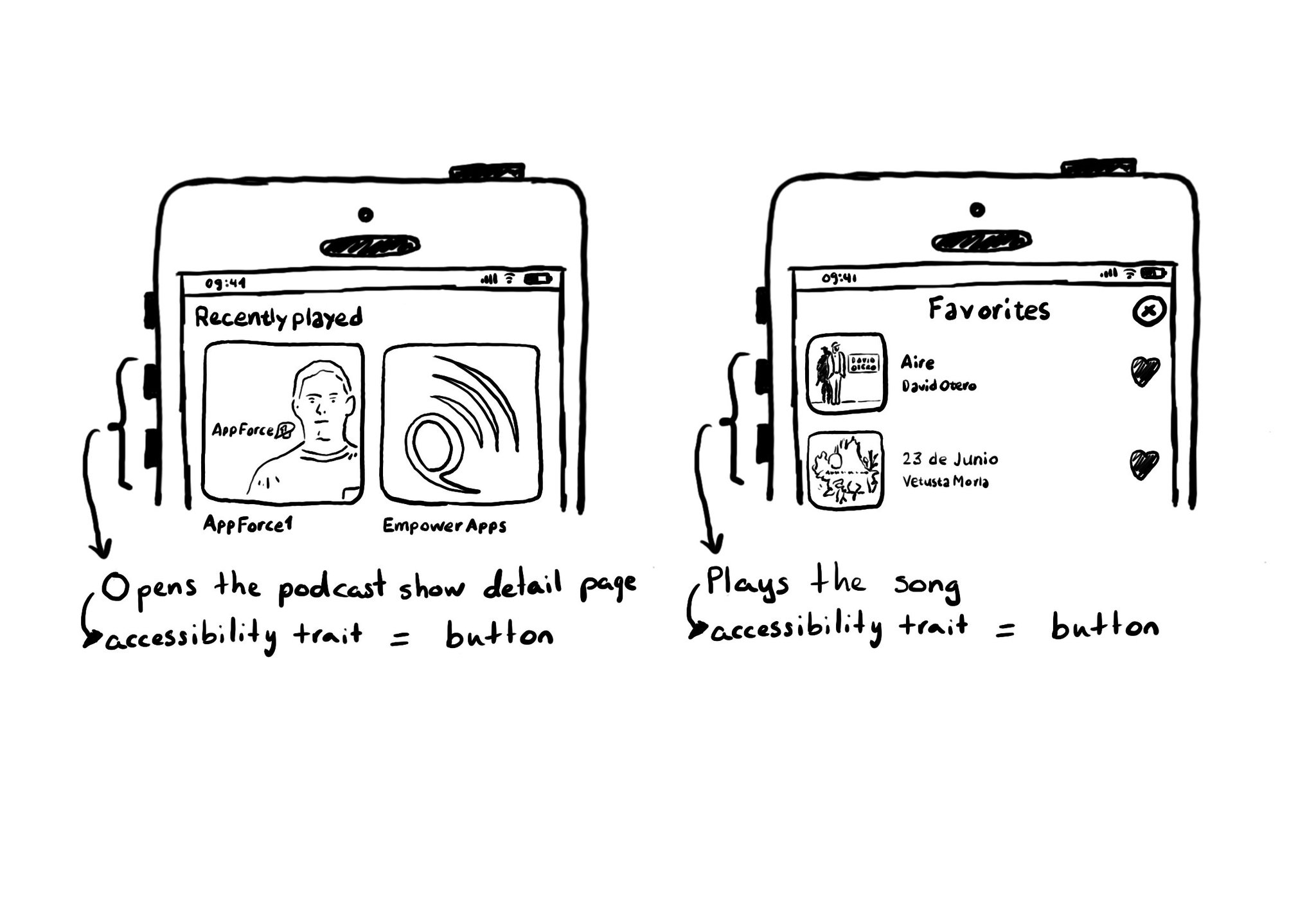There is an accessibility trait for defining something that represents a custom keyboard's key: .keyboardKey. It allows VoiceOver users to change the typing mode to Direct touch typing. The calculator app or an access pin pad, are some examples.

You may also find interesting...

It is possible to embed icons within text using NSTextAttachment and NSAttributedString. If you do, please remember to override the accessibility label, otherwise VoiceOver will announce it as "Attachment.png File".
Example code in the image:
```swift
let magnifyingGlassIcon = UIImage(systemName: "magnifyingglass")!
let searchButton = UIButton()
let searchTutorialLabel = UILabel()
searchButton.accessibilityLabel = "search"
let textAttachment = NSTextAttachment(image: magnifyingGlassIcon)
let string = "Select the
If you want to keep yourself up to date with what’s going on, or what has been published lately, on how to develop more accessible mobile apps, make sure you subscribe to Accessible Mobile Apps Weekly by @RobinKanatzar from @accessible_apps.

A common example where you need to manually configure the button accessibility trait is for some table/collection view cells. These tend to be “buttons” that perform an action, like playing music, or bring the user to a different screen.